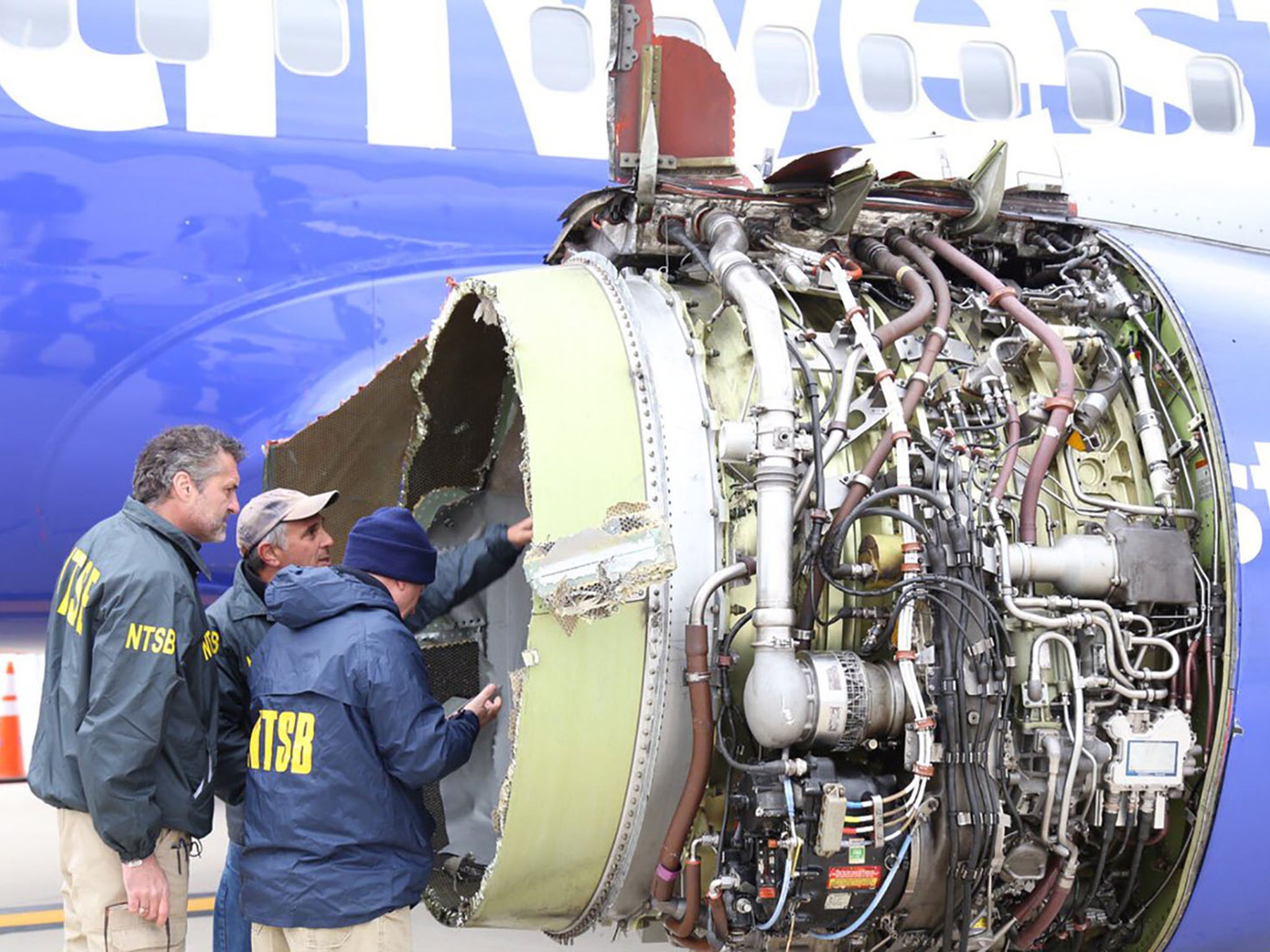Boeing 737 NG: Everything you need to know about aircraft ‘vulnerability’ after woman sucked out of window in fatal accident
Planemaker has agreed to retrofit all 7,000 jets currently flying

On 17 April 2018, a female passenger aboard Southwest Airlines flight 1380 was partially sucked out out of a window after part of the port engine housing disintegrated and hit the fuselage.
Jennifer Riordan, who was wearing a seat belt, died of her injuries. She was the first fatality aboard a Southwest Airlines flight in the carrier's 47-year history.
US accident investigators have concluded that there is a vulnerability on Boeing 737 NG aircraft, and the planemaker has agreed to retrofit all 7,000 of the jets currently flying.
These are the key questions and answers.
How do I know if I am flying on a Boeing 737 NG?
If you are aboard a Boeing 737, the overwhelming odds are that it is an NG. The initials stand for “Next Generation,” although today a more accurate description is “last generation”.
The latest version of the Boeing 737, the Max, is currently grounded worldwide following two fatal accidents that cost 346 lives.
The 737 has been flying for over half a century. Almost none of the earliest versions, suffixed -100 and -200, are still flying. The “Classic” 737, suffixed -300, -400 and -500, is in regular service. But fewer than 2,000 Classics were made, and many are no longer flying.
The NG, suffixed -600, -700, -800 or -900, was introduced in the mid-1990s. About 7,000 have been built and more are in production.
Ryanair flies more than 450 of the 737-800, the only type of plane currently in its fleet. Jet2, Norwegian and Tui are the other biggest operators of the plane in the UK.
What are the investigators worried about?
On the Southwest flight, a cracked fan blade broke off and hit the engine casing. The force of the impact caused part of the engine housing, known as the nacelle, to disintegrate and blow out a window on the plane. The National Transportation Safety Board (NTSB) report concludes that this demonstrated a potential structural vulnerability in the engine casing on all 737 NG aircraft.
It says: “Boeing’s post-accident analyses found that the fan cowl structure is more sensitive and more susceptible to failure when a separated fan blade impacts the fan case near the six o’clock position” – ie at the bottom of the engine.
Investigators recommend that existing 737 NGs should be retrofitted with a redesigned engine housing.
What does Boeing say?
“We are committed to doing our part in making sure an event like this never happens again,” says the aircraft manufacturer.
Boeing says it is working on an engine housing fix “to enhance their ability to withstand an engine fan blade out event as well as to increase the overall capability of these structures”.
How long will that take?
It is impossible to say. The redesigned housing will first be fitted to NG aircraft currently on order, then retrofitted to existing planes. Given the numbers flying, the process could take years.
The work will be timed to coincide with routine maintenance on aircraft and should not unduly jeopardise schedules.
But does that mean unmodified Boeing 737 NGs are unsafe?
No, the planemaker is adamant that “the issue is completely mitigated by the fan blade inspections”. These checks have been improved, using a new ultrasonic inspection technique, and should be able to identify hidden cracks.
What if I don’t want to fly on the plane?
Boeing, the airlines and safety regulators regard the 737 NG as safe. So unless you have booked a flexible (and very expensive) ticket you will not be able to claim a refund or switch flights without a penalty.
Are there any precautions that I can take in case of a sudden depressurisation?
Yes: watch the pre-flight safety demonstration carefully. It explains the oxygen mask procedure as well as reminding passengers to keep their seat belts on unless they are moving about the cabin. Some of the injuries on the Southwest flight may have been avoided if seat belts had been buckled.
Does this problem affect the Boeing 737 Max?
No, it does not have the same vulnerability involving the engine housing.
Join our commenting forum
Join thought-provoking conversations, follow other Independent readers and see their replies
Comments
Bookmark popover
Removed from bookmarks